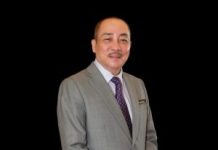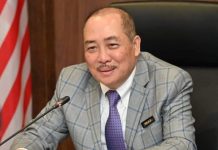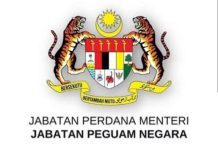KOTA KINABALU: A meeting was held at UCSF on Thursday, Oct 27 by a delegation from the Clinical
Research Centre (CRC) of Queen Elizabeth Hospital, represented by Dr Lenn Fui Fui, Research Officer,
Dr Chong Kai Lun, Medical Officer and Dr Nurul’Ain Mohd Yaakub, Medical Officer.
The CRC delegation was welcomed by UCSF Chairman, Datuk Dr Mohd Yaakub Hj Johari, Vice Chancellor, Dr Rafiq Idris and staff from the Faculty of Natural Science. Also in attendance were
senior officers from IDS, led by Mdm Jesi Majungki and Jennifer Abdul Hamid; and SEDAFIAT Sdn
Bhd.
The main objective of the meeting was to seek collaboration among stakeholders in Sabah to
assess the potential of harnessing ethnomedicine in complementing healthcare in Sabah.
It also aimed to generate greater awareness and strategies in optimizing the utilization of Sabah’s biodiversity resources for the socio-economic well-being of the people, in line with the SMJ Agenda, Shared Prosperity of Keluarga Malaysia and the UN Sustainability Development Goal.
The meeting took note that there had been significant development in Sabah in terms of research,
publications and development projects regarding ethnomedicinalv alue of Sabah biodiversityr esources implemented by the State and Federal Governments, together with the research anda cademic communities, the private sector and the NGOs.
Yayasan Sabah, UMS Tropical Biology Centre and Sabah Forest Research Centre in particular had
been undoubtedly among the pioneers in research in this direction.
IDS had also published a book entitled Utilisation of Sabah Non-Forest Timber Products, while Sabah Agro-Industrial Precinct had been established at Kimanis with development allocations provided by the Federal Government under the Sabah Development Corridor initiative.
The main objective of Sabah Agro-Industrial Precinct was to serve as an integrated platform
supporting agro-industry, specialty natural products such as in healthcare, food supplements and
herbal remedies, and agro- biotech.
The State Government had also established Sabah Biodiversity Centre to among others ensure
orderly development, research and documentation of Sabah biodiversity resources.
A semantic database, Herbal Medicinal Knowledge Base (HMKB) had been initiated and completed by a team led by Mdm Mary Sintoh, currently SEDIA Senior Vice President.
The representatives of the CRC, Dr Nurul’ain Mohd Yaakub and Dr Chong Kai Lun explained that the
local indigenous communities had been the custodian of ethnomedicine since time immemorial, and
widely practiced throughout the state. It was however important to document, ascertain the
effectiveness, efficacy and safety of using ethnomedicine.
Modern medicine normally had to undergo strict clinical trial prior to adoption. There was therefore
clearly the potential safety risk associated with ethnomedicine. It was therefore pertinent to have
sound scientific knowledge of the efficacy and safety of ethnomedicine to avoid adverse effect of uninformed usage.
The CRC sought to garner support from UCSF and other stakeholders as partners to achieve the above objectives. The CRC also highlighted that their department had regarded Sabah as a hub for ethnomedicinal research.
UCSF Chairman, Datuk Dr Mohd Yaakub Hj Johari stated that the Covid-19 pandemic had brought
out greater awareness of local communities on the potential of using local ethnobotanical resources in complementing community healthcare.
There had been numerous studies which had documented the benefit for example of pineapple, bambangan, turmeric, ginger, snakegrass, pegaga, and virgin coconut oil, which were all available locally as food and health supplements.
UCSF Vice Chancellor, Dr Rafiq Idris assured that UCSF would render its fullest cooperation,
especially in terms of research, development and training in support of ethnomedicinal research.
In this regard, UCSF currently had Faculty of Natural Science with some necessary academic resources and research facilities to support ethnomedicinal research activities and welcomed the opportunities of establishing research collaboration with the CRC Team.
The Vice Chancellor also expressed his appreciation to all participants, especially IDS and SEDAFIAT Sdn Bhd for their readiness to explore potential collaboration in ethnomedicinal research and development in Sabah.
UCSF Chairman concluded that: “It is now timely for all stakeholders to pull their resources to take stock of the ethnobotanical knowledge of the various communities, especially the indigenous communities, and document and carryout further research to ascertain their ethnomedicinal potential.
In the longer term, Sabah should seriously consider establishing Sabah Ethnomedicinal
Research Centre, a one-stop centre for ethnomedicinal research in Sabah.
The meeting todaybhopefully will lay the groundwork for the establishment of such centre. -pr/BNN






